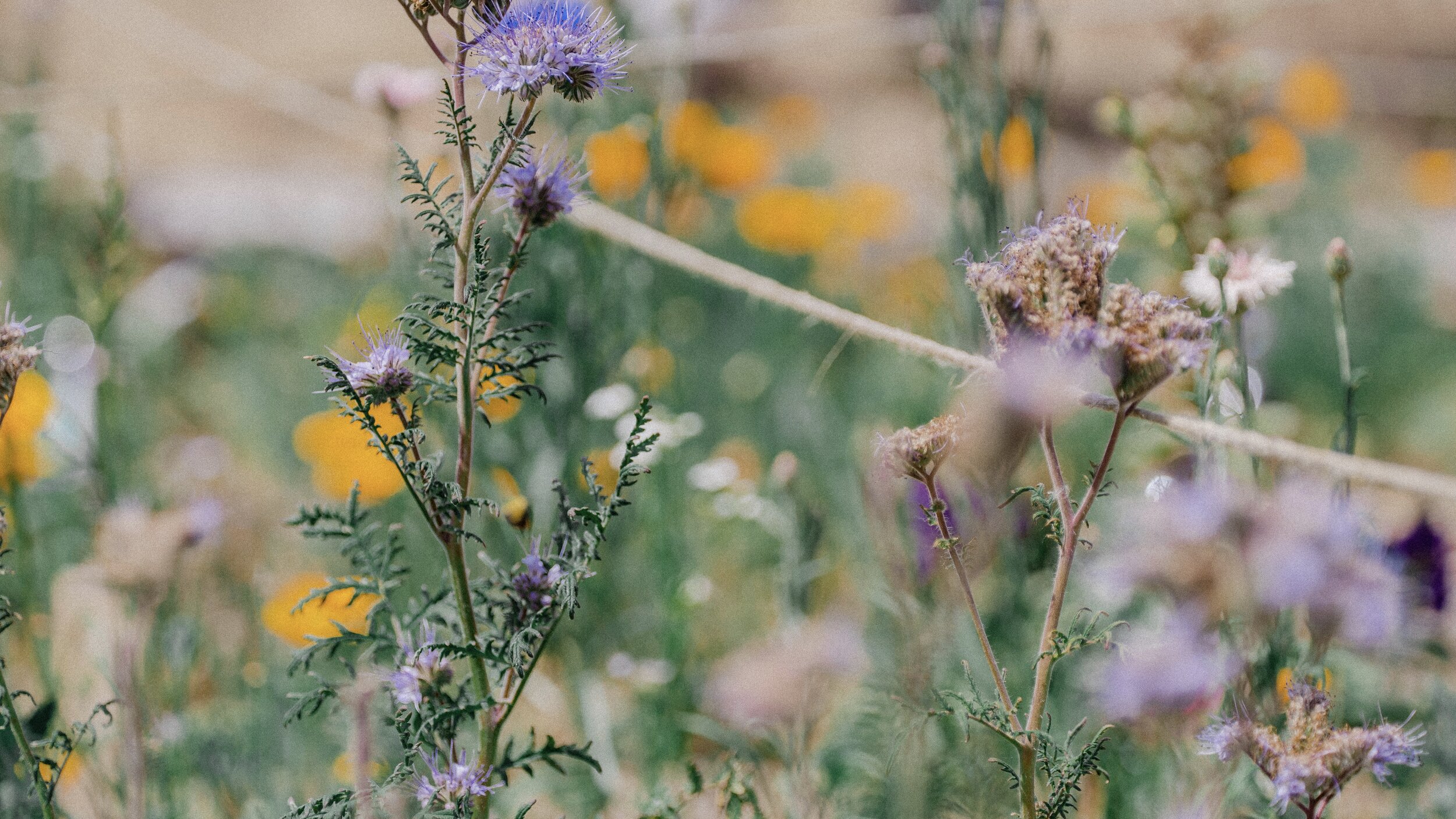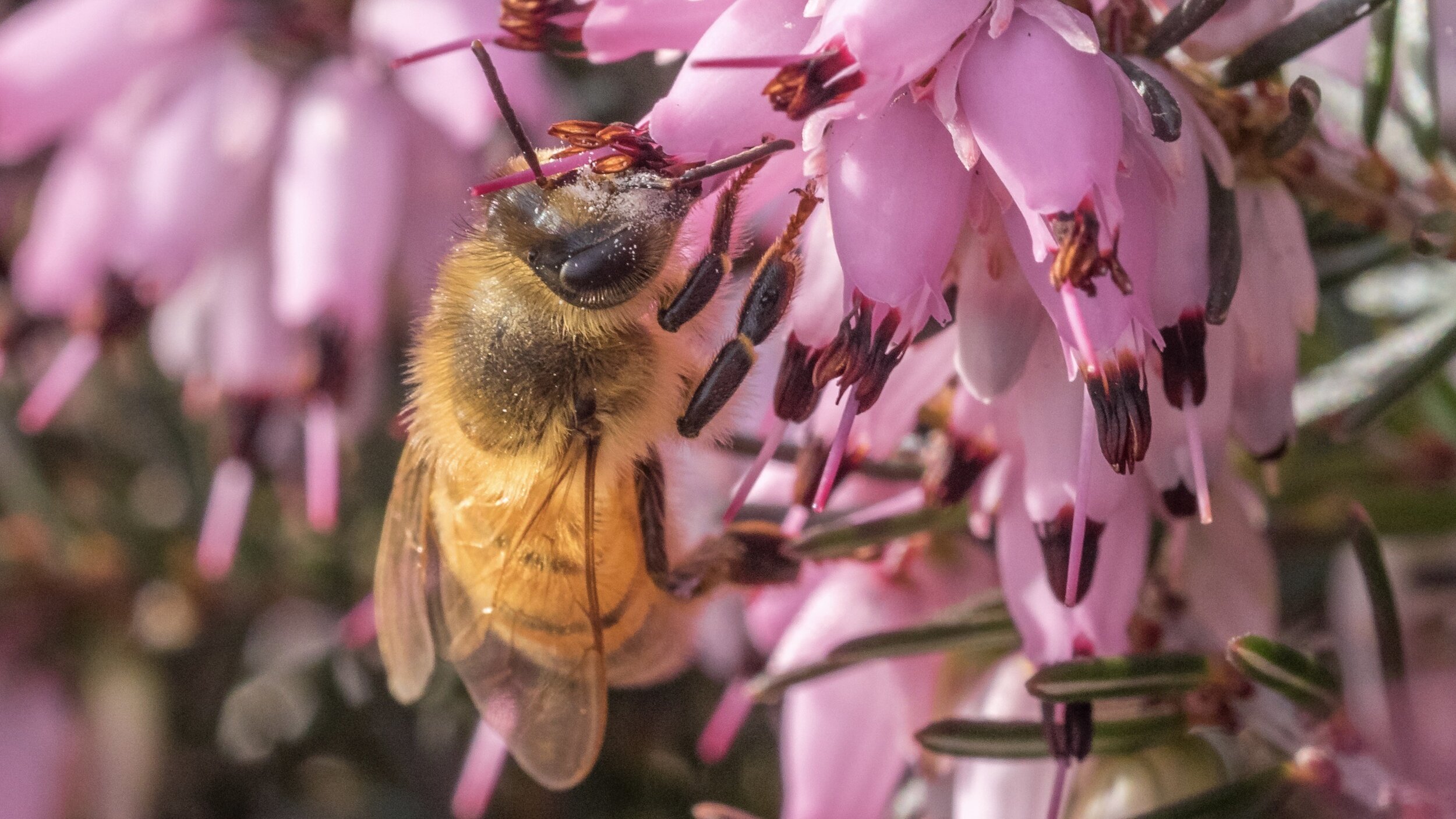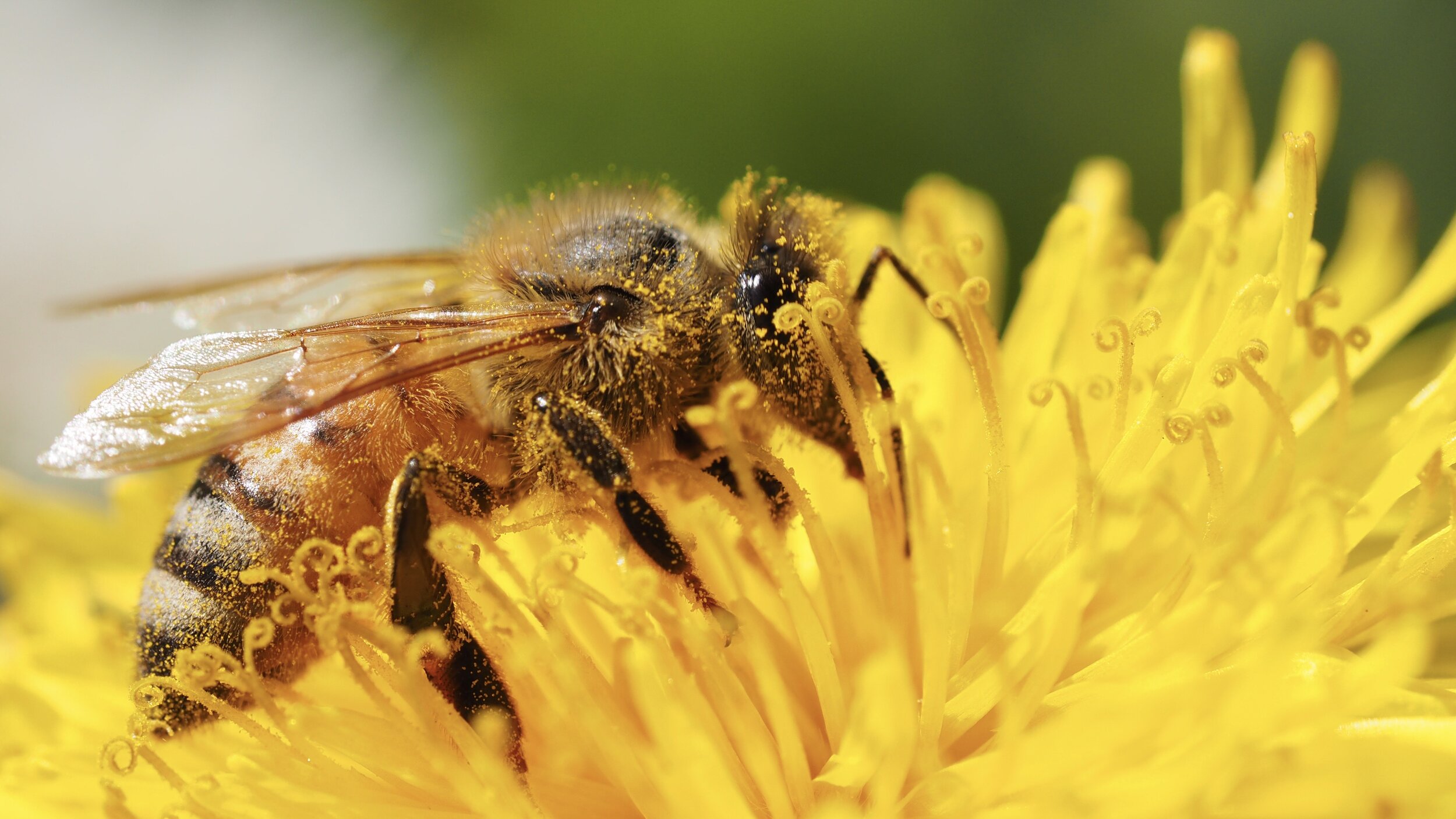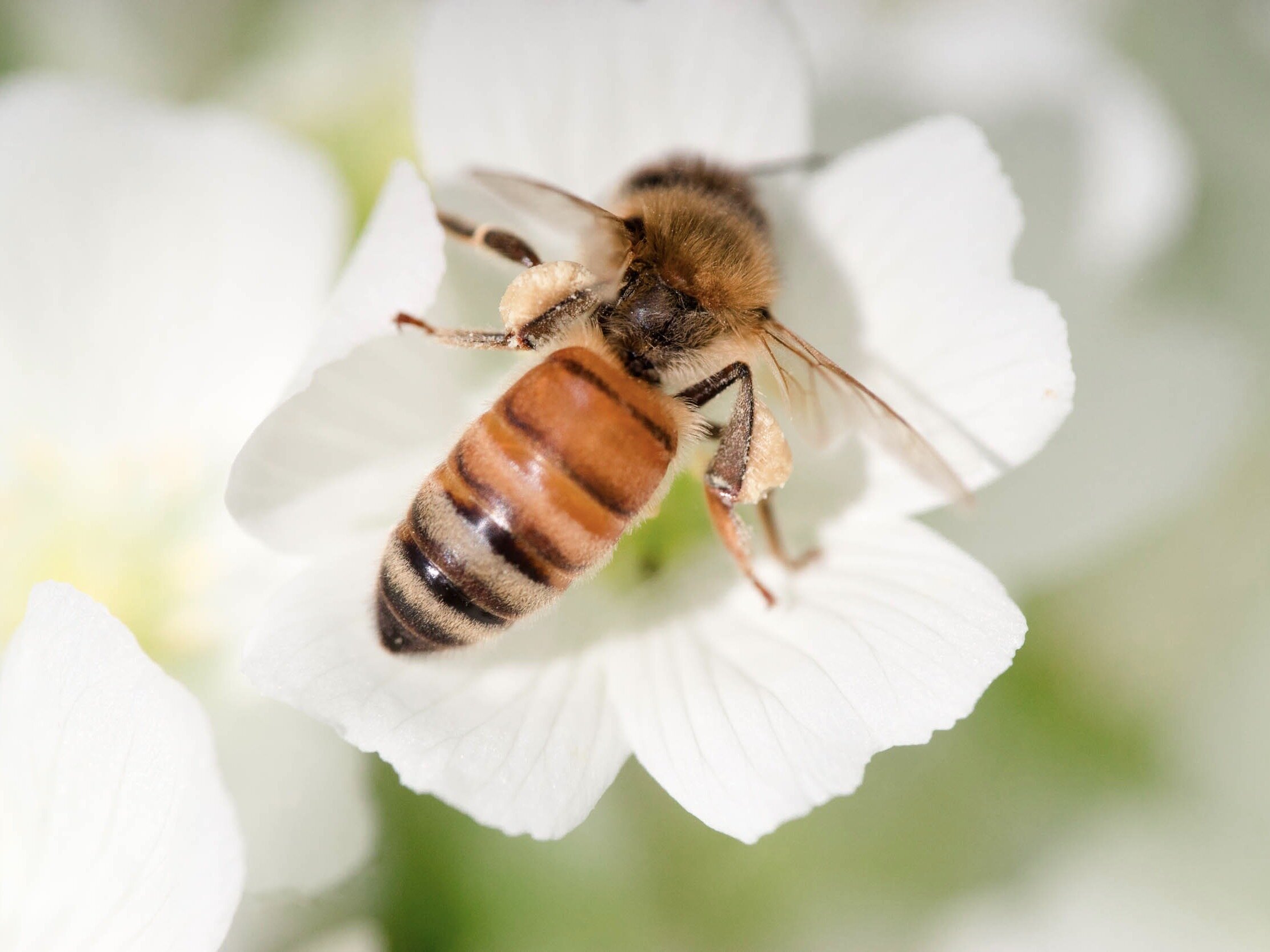Every beekeeper becomes familiar with the seasonal ebbs and flows of work they do for their hives. Those “beekeepers” providing habitat for the especially ephemeral mason bees and leafcutter bees are also very aware of the need to be tuned into changing seasons to provide for these tiny creatures as best they can. For the home gardener or hobbyist landscaper, this means getting inside the mind of a bee to know just what to add to your yard. In the end, you get the double reward of beautifying your home and supporting pollinator habitat!
Planting strategies from a pollinator perspective
When deciding which plants to add to the landscape of your home, it is important to understand that pollinators’ relationship with their food is a product of millions of years of coevolution. What is coevolution you ask? The bees and their floral foods have been spending millennia adapting to each other's needs. The strategies designed over these millennia determine which forage is right for which pollinator.
Some cool examples of this include:
Hummingbirds who are attracted to red flowers, many of which keep their nectaries deep in the flower, available only to pollinators with long beaks (hummingbirds!) or long tongues.
An orchid that looks like a good mating prospect, luring in a bee who finds themself deceived by the ploy! (But only after their activity on the flower collects pollen before they move along to the next flower.)
Some flowers have evolved to give off a rotten odor, attracting the attention of flies who would be equally thrilled to find actual rotting meat.
Not every pollinator-plant relationship is so dramatic; in fact, most flowers focus on color and shape to attract their desired pollinator. Learning about the preferences resulting from these coevolutions can be a good place to start when determining what your desired pollinator is attracted to. What color blooms? What shape flower? What nutritional needs? And importantly for seasonal gardening, which flowers are best which time of year?
There will be many plant lists for your area, but understanding what plants and pollinators go together will help build the foundation for your strategy to bring in certain pollinators. From there you can begin your landscape design.
(Pssst… If you’re interested in learning more about plant-pollinator strategies, the Department of Agriculture has a great info page.)
So, what does a bee need?
Bee species use different strategies to make it through the winter. But, come spring, every emerging bee will be looking for ample forage to start the next phase of their species’ lifecycle.
Bees need both nectar and pollen. They will be looking for nectar which provides quick carbohydrates. For honeybees this is the liquid that will become their winter food stores in the form of honey. They will also be looking for pollen, which in the spring is important for social species who feed essential proteins to their young to build up their populations. For example, one abundant source of spring pollen is the early budding willows lining river banks. Their flowers do not use nectar to attract bees, but rather provide pollen-rich forage bees are seeking.
Plant in large swaths. Especially in the more urban garden or in a smaller yard, the annual and perennial flowers you plant will help pollinators and can create a beautiful mosaic of color. But also, to the degree that you are able, plant in large swaths to help bees with pollination efficiency. While this may bring to mind the idea of a meadow, think also about how trees and large shrubs offer the availability of many blooms at once for foraging bees.
Consider the range of different pollinators. Honeybees will travel up to 3 miles from the hive, many bumblebees forage within a mile of their colony, while mason bees only go as far as 300 feet from their home base.
Provide a variety of colors and flower shapes. If you are keeping honeybees, mason bees, or leafcutter bees, you have bees that are called generalists who will forage on a wide variety of flower shapes and colors. As you plant additional colors and shapes you will be providing forage for an increasing number of pollinators. You can even learn about any specialists in your area who have very specific floral needs.

What you can do!
Addressing the needs of the bees as listed above, we can begin to put together an idea of what to add to a bee-friendly spring garden. While bulbs do well planted the fall before their spring bloom, many nurseries still provide some potted bulb plants this time of year. Trees and shrubs do well planted in the winter with enough time to focus on rooting before putting energy into spring leaves and flowers, but with adequate water, trees can certainly be planted in the spring! If you just came around to the idea of spring blooms for bees this year, and intend to plant bulbs, trees, or shrubs later this year, take the opportunity to make observations: What part of your yard has space for bulbs? What early-blooming shrub do you notice in your neighborhood that you would like to add to your landscape for next spring? Or start thinking ahead for summer blooms. Blueberries! Raspberries! Currants!
Below are some ideas for plants you can add to your landscape here in the Pacific Northwest. This list is by no means exhaustive, and if you want more ideas, Xerces is a great resource for regional plant lists for pollinators.
Note: Native options are marked with an asterisk (*).
Got room for a tree?
Pacific Madrone (Arbutus menziesii)
Vine maple (Acer palmatum)
Many fruit trees in the rose family bloom early. Think cherry, apple, apricot, pear. Be aware that the highly hybridized varieties of these have been bred to be showy and are not usually great sources of pollen and nectar.
Consider a shrub
Red flowering currant (Ribes sanguineum)
Oregon grape (Mahonia aquifolium, Mahonia repens, Mahonia nervosa)
Manzanita (Arctostaphylos columbiana)
Bulbs are often a great source of early pollen
Oregon Iris (Iris tenax )
Common Camas (Camassia quemash)
Crocus (Crocus spp.)
Common Snowdrop (Galanthus nivalis)
Groundcover
Kinnikkinnik (Acrtostaphylos uva-ursi)
Western Bleeding Heart (Dicentra formosa)
Winter heather (Erica carnea)
Perennials
Most of the heavy-lifting for spring flowers will be from the categories above, but you can start planning for summer blooms now! Think Oregon Sunshine*, Checkermallow*, and gorgeous *Tigerlilies. Or stock your herb garden with pollinator-friendly salvias, rosemary, lavender, and other mint-family favorites. Finally, don’t forget the asters: sunflowers, black-eyed susans, and coneflowers.

A few more tips for Bee-Friendly yards
It is important to note that whenever you make changes to your yard that you are disturbing habitat, even if just for the smallest and nearly unseen creatures! Before you start digging up the whole yard, remember that pollinators’ needs are sometimes aided by what we do and sometimes aided by what we don’t do!
Leave the Leaves! This is the Xerces Society’s call to remember the habitat needs of ground-nesting bees.
Leave the weeds, too. Well, maybe. If you are reserving some of your yard as a lawn, many lawns have built-in forage for bees. That is, as long as you can rethink the idea of “weeds”. Many lawns have clover or dandelions which provide great early forage for bees. While dandelions won’t have a place on a native pollinator plant list, they do the job in the lawn.
Add a bee bath. Bees and other pollinators get thirsty too. While this is not so much of a problem in the spring in the Pacific Northwest, by adding a bee bath to your landscape while planning your spring garden, you will ensure that the bees who visit your yard will have their water needs met come the sweltering heat of summer.
Choose native plants over hybrids. When choosing plant varieties, look for varieties that have not been highly hybridized. These have been bred for appearances, not for pollinators, and are often not great sources of nectar or pollen. Better still, choose native varieties when available! These have coevolved with native pollinators to be their best food source.
Choose pesticide-free plants. The same chemicals that keep away unwanted pests create health problems for the beneficial insects we do want in gardens.
Plant for the whole year. Planting for spring is just the start! Watch your yard for gaps in the year when pollinators could use more blooms! Plan and plant to have year-round forage.

Wrapping it Up
If you live outside the Pacific Northwest and are looking for some suggestions for your area, consider getting in touch with a local county extension or soil and water conservation district. Xerces also provides regional plant lists for all parts of the country.
Every season has a unique way for gardeners, horticulturists, and bee lovers to contribute to healthy habitats and abundant forage for bees. Whether you are ready to dig in - literally! - or are thinking ahead to coming seasons, you can design your yard to be not only beautiful but to also provide for our pollinating friends.
———
Katie Heyn has been teaching and learning about plants for more than a decade. A botanical focus shaped how she led youth outdoor trips in Alaska and Oregon, and later brought her to garden education. While working at Brooklyn Botanic Garden her work ranged from planting radish seeds with toddlers to leading garden-to-cafeteria food systems programs with high school students to training seasonal environmental educators. It was during her time at BBG that she also earned her Horticulture Certificate and kept her first rooftop beehive. Back in the Pacific Northwest for five years now, her work with plants continues to expand and now includes ecological restoration and herbal studies. Contact Katie here.



